Moorcroft pottery has been highly prized by collectors since the 1800’s and is still exceptionally collectable today. We sell Moorcroft pottery with varying degrees of rarity in every auction. You will find Moorcroft pottery at auction in 90% of our sales. With its vast diversity in age, pattern, shape and form, there’s something to suit every collector, from those just starting out to those looking for the rarest most sublime pieces.
Potteries Auctions can identify and provide valuations on a wide range of Moorcroft Pottery pieces.
Top Selling Moorcroft Pottery at Auction
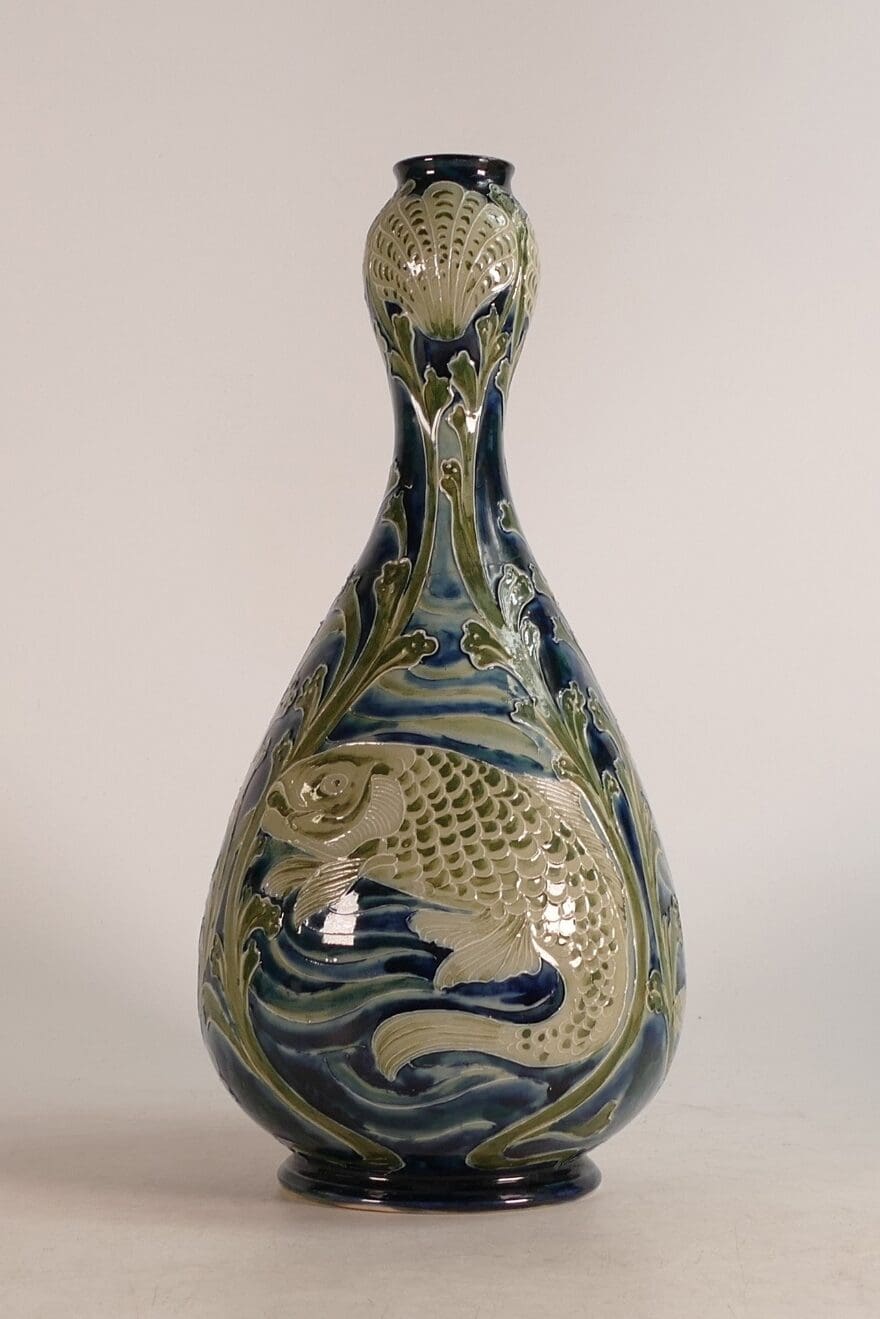
A William Moorcroft (1872-1945) rare Carp vase c1902, signed in green
£3,600
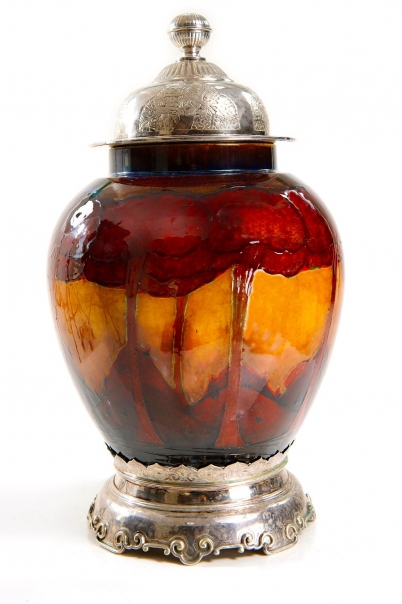
William Moorcroft Flambe Eventide Landscape Exhibition Vase with silver stand and cover
£17,200

Moorcroft pottery vase in the Jerusalem pattern designed by Nicola Slaney
£3,000
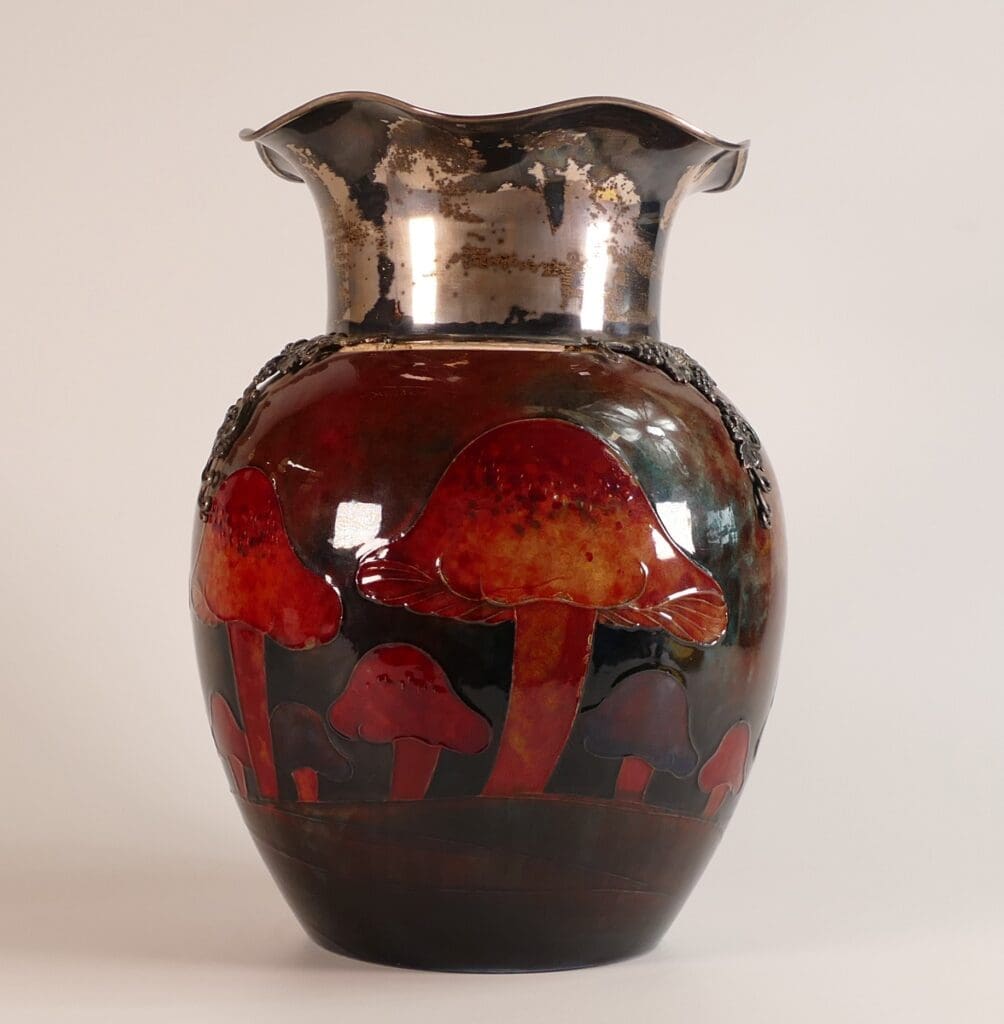
William Moorcroft Flambe Ginger Jar in the Claremont design, c1920, with original Sterling Silver mounts
£3,200
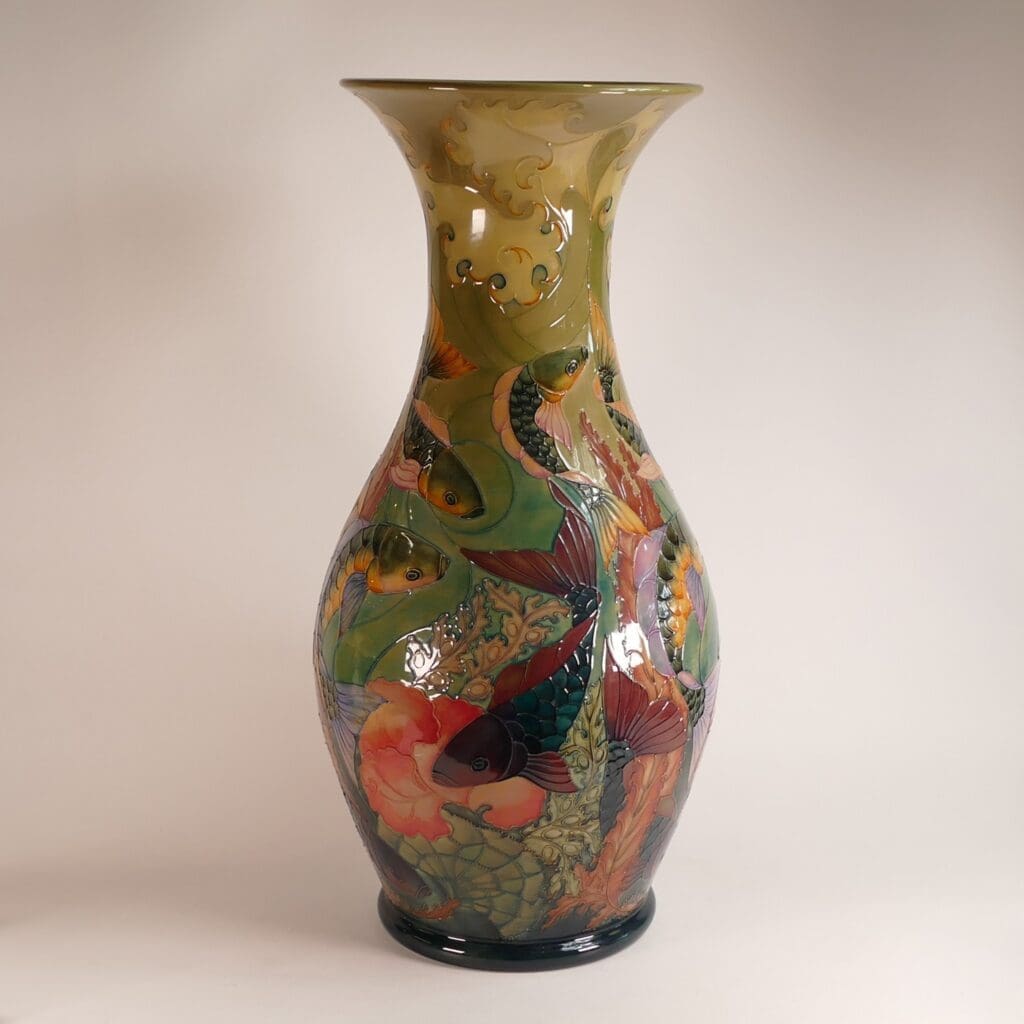
A Moorcroft large floor vase, decorated in the Carp design by Sally Tuffin, signed to base J Moorcroft
£2,800
Got an interesting item?
Speak to one of our experts to find out the value of your pottery, antiques, jewellery, & collectables
Book a valuationWhether you are looking to buy or sell Moorcroft vases or other collectables, the team of experts at Potteries Auctions can help you find the piece you are looking for, or value your items for sale. Request a call back if you are looking for a valuation and are seeking to sell some Moorcroft collector pieces at auction.
Moorcroft Pottery Facts
- 24 year old William Moorcroft joined pottery manufacturers James Macintyre & Co in 1897, and within a year he was put in charge of the studio due to his creative talent.
- Queen Mary was an avid collector of Moorcroft Pottery and granted a royal warrant to William Moorcroft in 1928. His son Walter Moorcroft also joined the business, carrying on the company’s royal warrant that was re-issued in his name in 1946.
- The most distinctive style of Moorcroft pottery is the Art Nouveau influenced Florian Ware, where the design is outlined using a technique called tubelining. Pieces were often produced in high glaze with vibrant colours.
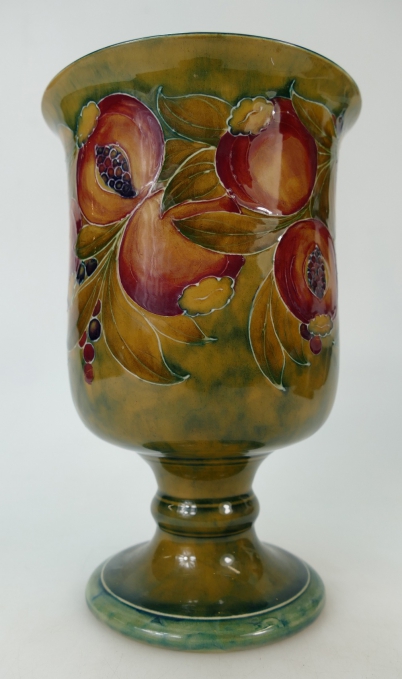
The History of Moorcroft Pottery
Moorcroft was originally founded as a studio in 1897 within a large ceramic company, James Macintyre & Co.. Moorcroft pottery soon made its mark on the world with designs from the then 24-year-old William Moorcroft, who personalised each piece of pottery produced with his own signature or initials. This did little for James Macintyre’s name and reputation, and in 1913 William parted company with Macintyre and marched his workforce across Cobridge Park to a new factory where Moorcroft pottery is still made today. Moorcroft was financed by the famous store Liberty of London store who continued to control Moorcroft until 1962. So successful was the factory in 1928 Moorcroft Pottery was appointed potter to HM The Queen.
William Moorcroft died in 1945 and his elder son, Walter, took over management and design and later bought out Liberty, but Moorcroft seldom prospered. In 1984, the family sold the bulk of their shares and Moorcroft is now controlled by the Edwards family.
Over the past decade, interest in Moorcroft has grown and there is high demand for rare and desirable Moorcroft vases, Macintyre Art Pottery, Florian Ware, Faience, Liberty and Co, Moorcroft Lustre Ware, Moorcroft Flambe Ware, Moorcroft Bowls, Moorcroft Candlesticks and Ginger Jars and early pieces.
Moorcroft patterns have since the beginning been synonymous with floral designs from the early Aurelian, Dura and Florian Ware, with patterns such as Daffodil, Poppy, Iris, Violet, ,Wisteria, Peacock, Lilac, Honesty, Tulip, Wild Rose, Primrose, Crocus, Fresia, Daisy, Forget Me Nots, Chrysanthemum, and the popular Cornflower design.
With the Hesperian Ware came patterns depicting fish, notably, Carp, seaweed and shells. Colours varied from the typical Florian Blue and included greens, yellows and salmon hues sometimes with gold accents. Other areas of nature captured Moorcroft’s imagination, such as toadstools and butterflies.
In 1902, the first landscape design was produced with pattern names such as Hazledene, Claremont, Prunus and later Moonlit Blue, Eventide and Dawn. The popular Pomegranate and Pansy designs were introduced in 1910, along with the Spanish design and its much richer new array of subtle and carefully balanced colours. Next came Persian Ware, reflecting the enthusiasm at the time for Middle Eastern styles of decoration. Moorcroft continued to use flowers as his main source of inspiration, introducing Orchid, Anemones, Fresia, Honeysuckle, Spring Flowers, Clematis, Fuchsia, Lily, Columbine, Hibiscus, Bourgainvillaea, Magnolia, Geranium and Campanula Grape and Leaf and the more exotic South African Flower and Waratah. Many different glazes were produced, including Flamminian, Lustres and Powder Blue.
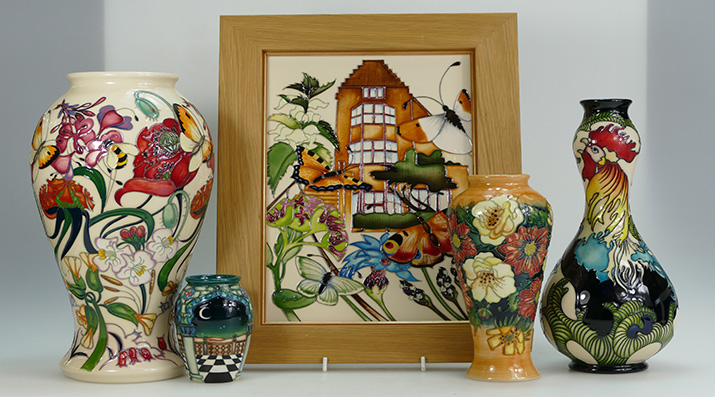
As well as vases, bowls, jardinieres, jugs, tea sets and candlesticks, Moorcroft have produced many unusual items, such as biscuit barrels, butter dishes, scent bottles, napkin rings, bonbonnieres and clocks.
The 1980‘s saw designs such as Sunflowers, Reeds At Sunset, Fairy Rings, Penguins, Finches, Lemons and later Bramble, Buttercup, Mamura and Cluny from designers such as Sally Tuffin. In 1993, Rachel Bishop joined Moorcroft and has produced many different designs, incorporating a varied subject matter. Design names such as Phoenix, Lamia, Tranquillity and Illumination now join the long list of Moorcroft history.
In its centenary year in 1997, the Moorcroft Design Studio was started. This was swiftly followed by Moorcroft Enamels, which later closed in 2006.
The Victoria & Albert Museum has joined many other national museums with significant pieces of Moorcroft pottery in their permanent collections.
Today, Moorcroft leads the world of art pottery with its own distinctive style and is selling more all over the world today, than it did even in its previous heyday of the 1920’s.
Get In Touch
Potteries Auctions can collect items for auction from anywhere in the UK, and we can also handle large collections from all over the world, so just get in touch with us to discuss. We pride ourselves in our packing and shipping service to get goods out to purchasers, making it a perfect solution for buyers who can’t attend auctions in person.
Sign up for our newsletter
If you would like to receive advance notification of upcoming auctions and sale notifications, then please subscribe to either our text alerts or email newsletter via the buttons below.
